Annual Survey: Film & Book / part 1
This year again, the last issue of dok.revue features a survey in which we asked filmmakers, producers, theorists, historians, pedagogues and other figures of the Czech and Slovak documentary world to tell us what documentary films and books influenced them the most in the previous year. The aim is not to produce another “top ten chart”, but to capture the trains of thought and contexts that shape contemporary documentary production and its perception not only by the professional public, as is also indicated by the personal tone of the questions.
1/ Which documentary film influenced you the most in the previous year, and why?
2/ Which book influenced you the most in the previous year, and why?
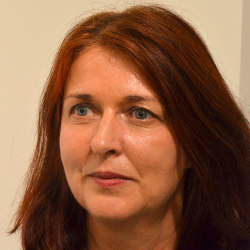 Tereza Brdečková, member of the Council of the State Cinematography Fund
Tereza Brdečková, member of the Council of the State Cinematography Fund
1/ Definitely Pearl Button, Pablo Guzmán, Chile, 2015, a film included in the main competition at this year’s Berlinale. Aside from a powerful testimony about the horrifying colonial and totalitarian legacy, it employs a poetic and yet direct filmic language, I consider it one of the few documentary works that managed to set a future trend.
2/ The Swerve: How the World Became Modern – a book by Stephen Greenblatt that hasn’t yet been translated and that provides an incredibly thrilling account of the history of the book culture, readership and the rational view of the world.
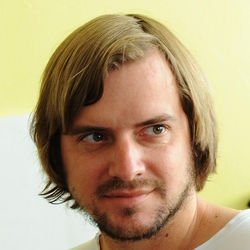 Tomáš Bojar, documentary filmmaker
Tomáš Bojar, documentary filmmaker
1/ Sacro GRA (Gianfranco Rosi, 2013). Purity. Modesty. Emphasis on the seemingly trivial details in human life. Topographic and dramaturgic consistency. Rosi is neither an ideologist nor a narrator-juggler. He conveys his crucial mission in a very loose and seemingly deliberate way – just like the best works of Italian Neorealism. Amidst the flurry of films relying on “clear-cut” topics or “moving” human stories, I found Sacro GRA very refreshing. I very often recall some of the film’s scenes. And especially how lightly it uses partial – mostly unspectacular – cinematographic situations, creating a living image of the world. By the way, something similar was recently achieved by Martin Dušek in his Into the Clouds We Gaze.
2/ Michel Houellebecq: Submission, published in 2015. A simple, functioning composition. Accuracy. Wit. Novelty. Light irony. And often even unexpected depth. Houellebecq has the gift to reveal unfamiliar perspectives of familiar things to readers, to awaken them and to astonish them, to open their eyes to various hidden aspects of the reality. But it is not a cheap provocation on his part, but a smart, nuanced commentary on the situation in which the western society now finds itself. The question about what should fill Europe’s post-Enlightenment value and spiritual void will now probably be asked more often. Indeed, Houellebecq’s answer is very exaggerated and truly “novel-like”, but it contains a great deal of valuable advice. And at points it is also incredibly witty. As far as humour is concerned, Europe is definitely not in a bad shape.
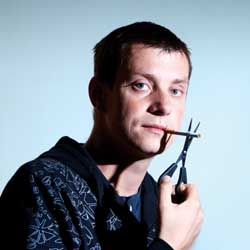 Ivo Bystřičan, documentary filmmaker
Ivo Bystřičan, documentary filmmaker
1/ I was struck by this year’s Homeland (Iraq Year Zero), a five-and-a-half-hour-long intimate opus by Iraq’s director Abbas Fahdel (2015), who started to make a film about his family living in Baghdad several months before the invasion of the US and NATO troops in Iraq. With disarming humour and fascinating reasonability, the family prepares for the possible attacks as if they were something commonplace. The director’s brilliant and naturally ubiquitous camera is recording the approaching tragic and complete devastation of the country – although not expected by the family, the viewer knows what will happen. And the five and a half hours of the film’s running time are just enough. It is a great chronicle of a key event of the third millennium, after which the self-illusion of the Euro-American civilisation is no longer supportable.
2/ And because this year, I decided to shoot a film in Iraq and focus on the remaining Christians living in the Middle East, who are fleeing away from the terrorists of the so-called Islamic State in the hope to find support from Europe in refugee camps, I started to study sources related to Christianity. I took an initially marginal interest in An Introduction to Catholicism (2013) by Lawrence S. Cunningham, a professor of theology who surprised me with his openness, ability to view the Church critically as a power institution and a living, and internally heterogenic and changeable organism. The book provided insight into the thoughts and experiences of hundreds of thousands of people and overshadowed my previous tolerant ignorance of Christianity and other religions. I believe that over time, despite all troubles and numerous antagonisms, religions and faith will be the factor that will manage to interconnect the planetary community in its diversity and lead it to peace and mutual collaboration.
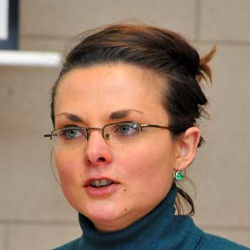 Lucie Česálková, film historian
Lucie Česálková, film historian
1/ A multi-layered experience was the film by Vitaly Mansky, Under the Sun (2015) as a visually artistic contemplation about the everydayness of/and power. The portrait of an asylum ship, Flotel Europa, by Vladimir Tomić (2015) offered historical implications and a more general context of the refugee phenomenon. Other documentary formats include the HBO’s The Jinx: The Life and Deaths of Robert Durst by Andrew Jarecki (2015) who brilliantly illustrates that also in the case of a documentary film, one of the assets of seriality is the possibility to recount complex stories and to batch information in a premediated manner – this time culminating with a truly genial point.
2/ At the moment, I am reading Francesco Casetti’s The Lumière Galaxy: Seven Key Words for the Cinema to Come (2015), in which the author follows up on his previous work about the influence of cinematography after the end of the 19th century on the concept of perspective and on the modern experience. This time again, the key concept of Casetti’s thoughts is experience, dealing also with a very topical expansion of moving images beyond the cinema screen and onto various portable devices, asking what (innovative) role they play in culture and in our lives.
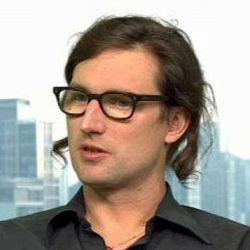 Jan Foukal, documentary filmmaker
Jan Foukal, documentary filmmaker
1/ My most interesting documentary experience was a film selection of films by Artavazd Peleshyan at this year’s Jihlava IDFF in the director’s presence because it reminded me of a type of film narration that has long been defining the potential foundations of a great structure.
2/ Unfortunately, the books I read in the past year, have not been of such a quality as those I read in the previous year. So far only The Monk and the Lama by Frédérico Lenoir, because it introduces the requisite impulses for generalisation of the nature of the soul into the ecumenical issue.
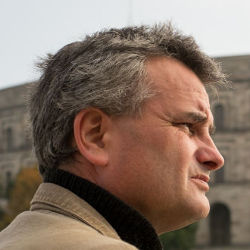 Jan Gogola jr., dramaturg
Jan Gogola jr., dramaturg
1/ For instance, Caesar Must Die (2012). Several docs in one, a reality as a continuum: the times of Julius Caesar as still relevant 2,000 years later. And also the emperor’s life adapted by Shakespeare as the drama, Julius Caesar, which has been topical for over 400 years. One of the proofs is the recent adaptation of Shakespeare’s adaptation by the theatre ensemble active in Reibibbia prison in Rome, in which the prisoners place themselves in various situations throughout the history. And finally a film adaptation of the aforementioned prison theatre adaptation of Shakespeare’s adaptation – the film fresco, Caesar Must Die captured through the animal physicality of the criminals, with an internal dimension of historical characters and the ability to speak through the tongue of Shakespeare as their companion.
2/ For example, Octavio Paz: Sor Juana Inés de la Cruz, Or the Traps of Faith. A biography of a Mexican painter and nun living in the 17th century written in the genres existing in her day: essay, philosophy, history, poetry, politics, theology, and physicality. A polyphonic portrait that can be indirectly characterised by Paz’s own commentary on sor Juana’s collection, First Dream: “Its protagonist does not have a name, age, or gender: it is a human soul. It is only thanks to the last words of the last line that we realise that this soul belongs to sor Juana: ‘Leaving the world illuminated / filled with light I awoke’. This message does not change the impersonal character of the poem since souls, as many times mentioned by sor Juana, ‘don’t have a gender”. The meeting of faith and imagination as a clash causing light to reach us through centuries even though it was prematurely extinguished by the power of the times.
The answers have been abbreviated by the editor. For their full and detailed version go to www.dokrevue.cz


